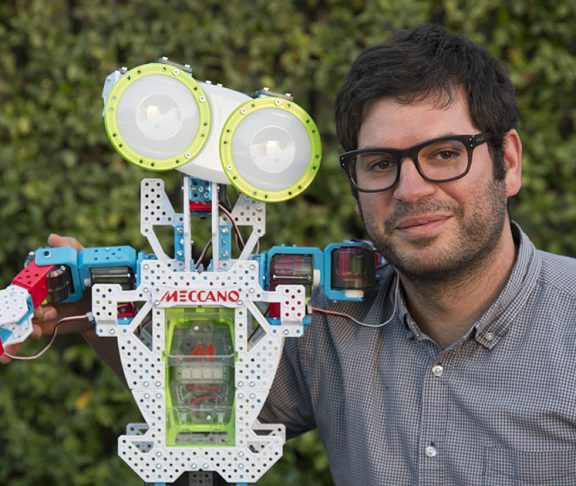Learn about three kinds of play that aren’t only fun and engaging but also foster the next generation of innovators.
As a parent, you understand the power of play. From board games to tag to teatime, it helps your child develop physically, emotionally and mentally. But as our world becomes increasingly dependent on technology — a 2016 study by the Erikson Institute found that 85 percent of parents allow children under the age of 6 to use technology in the home — it seems only natural that play should adapt to the times.
Consider three types of advanced play you can encourage from a young age that foster critical thinking skills and prepare children for the jobs of the future.
1. Mechanical engineering
“Kids learn through constructing things,” says Steven Canvin, founder of Google’s MOONBOTS Challenge, an international, online robotics competition for kids 8 to 17. Mechanical construction offers a perfect way to introduce kids to logical problem-solving, since they have to learn to construct and deconstruct with their own hands.
“We hold to a belief that if you can build it with your hands, you can build it with your mind,” says Andres Garza, the senior design manager at Spin Master and creator of the robotics platform from Meccano (also known in the United States as Erector.) “Building a robot, such as our M.A.X. or MeccaSpider,” he adds, “gives you a deeper understanding and a deeper vocabulary for how things around you are assembled.”
2. Electronic engineering
“It’s imperative that kids learn how electronics work,” says Canvin. “One thing is just shoving an iPad in front of them. Another thing is to teach them how to deconstruct it, use it in a different way or actually learn what’s inside. Then they will understand the principles instead of just being passive users of technology.” Kids are curious by nature, so appeal to that by encouraging them to think about how and why the electronic devices that surround them in their day-to-day life — from smartphones to robotic vacuums — do what they do. “It’s natural that kids should be educated on how and what to do with robots,” Canvin continues, “and how they can become masters of them.”
“Having a basic understanding about how electronics work and the basic components that are involved with bringing these things around them to life is important,” says Garza. “It’s important to demystify the things that kids interface with on a daily basis. Giving them a sound foundation on how these things operate allows them to be more open and willing to work with them.”
3. Programming
“Coding is a way to introduce young kids to the world of mathematics,” Canvin shares. “I don’t think you can do that too young. Most coding is understood as building blocks that you put together to create a bigger structure.”
Marvin Hall, the creator of Halls of Learning, a STEM-based educational organization in Kingston, Jamaica, brings robots into his classroom because, he explains, “It’s essential that kids can touch what they’re programming. That they can see what they’re programming in a physical way.
“Programming becomes much more fun and engaging because what you’re programming is a physical thing — kids get to touch and feel their program and every mistake they make they can see it as a physical experience. Everything the robot does correctly, they can see it.”
“Our Meccano-Erector teams believe that when it comes to basic foundational understanding of mechanical engineering, electronic engineering and the programming that goes along with it — using those in combination in a creative way opens up the possibility of being able to be inventive in the world of our future,” concludes Garza. These skills enable our children “to create new products, ideas and experiences that are going to define our changing world.”

